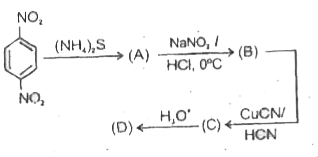If the above normal gene sequence changes to ABCABCDEFGH, then has occurred.
deletion
point mutation
inversion
duplication
The correct Answer is:D
To solve the question regarding the change in the gene sequence to ABCABCDEFGH, we will analyze the situation step by step.
1. Identify the Original Sequence:
- The original gene sequence is not explicitly provided, but we can infer that it is a sequence that, when altered, results in the new sequence ABCABCDEFGH.
2. Analyze the New Sequence:
- The new sequence is ABCABCDEFGH. Notice that the sequence "ABC" appears twice in succession at the beginning of the new sequence.
3. Determine the Type of Change:
- The repetition of the "ABC" segment indicates that there is an additional copy of this segment in the new sequence. This suggests that a mutation has occurred.
4. Define Duplication:
- In genetics, duplication refers to a mutation that involves the copying of a segment of DNA, resulting in the presence of two copies of that segment. In this case, the segment "ABC" has been duplicated.
5. Conclusion:
- Since the sequence has changed due to the repetition of the "ABC" segment, we conclude that the type of mutation that has occurred is duplication.
Final Answer:
The change in the gene sequence to ABCABCDEFGH indicates that duplication has occurred.
---
- The original gene sequence is not explicitly provided, but we can infer that it is a sequence that, when altered, results in the new sequence ABCABCDEFGH.
- The new sequence is ABCABCDEFGH. Notice that the sequence "ABC" appears twice in succession at the beginning of the new sequence.
- The repetition of the "ABC" segment indicates that there is an additional copy of this segment in the new sequence. This suggests that a mutation has occurred.
- In genetics, duplication refers to a mutation that involves the copying of a segment of DNA, resulting in the presence of two copies of that segment. In this case, the segment "ABC" has been duplicated.
- Since the sequence has changed due to the repetition of the "ABC" segment, we conclude that the type of mutation that has occurred is duplication.
The change in the gene sequence to ABCABCDEFGH indicates that duplication has occurred.
Topper's Solved these Questions
- PRINCIPLES OF INHERITANCE AND VARIATIONBOOK - AAKASH SERIESCHAPTER - PRINCIPLES OF INHERITANCE AND VARIATIONEXERCISE - EXERCISE -II (Sex determination & Genetic Disorders)
46 Videos
- PRINCIPLES OF INHERITANCE AND VARIATIONBOOK - AAKASH SERIESCHAPTER - PRINCIPLES OF INHERITANCE AND VARIATIONEXERCISE - EXERCISE -II (NCERT Examplar problems)
18 Videos
- PRINCIPLES OF INHERITANCE AND VARIATIONBOOK - AAKASH SERIESCHAPTER - PRINCIPLES OF INHERITANCE AND VARIATIONEXERCISE - EXERCISE-I (Sex determination & Genetic Disorders)
44 Videos
- PRINCIPLES AND PROCESSES BOOK - AAKASH SERIESCHAPTER - PRINCIPLES AND PROCESSES EXERCISE - Exercise - III (Previous AIPMT/NEET Questions)
26 Videos
- RESPIRATION IN PLANTSBOOK - AAKASH SERIESCHAPTER - RESPIRATION IN PLANTSEXERCISE - Exercise - III
9 Videos
Similar Questions
Knowledge Check

In the above reaction sequence, A , B and C respectively areAbenzene, nitrobenzene, anilineBbenzene ,m-dinitrobenzene , m-nitroanilineCtouluene, m-nitrotoluene, m-toluidineDbenzene, nitrobenzene, hydrazobenzene.
Product (D) in above sequence is :A B
B C
C D
D
The gene sequence that codes for proteins are:
View Solution
Look at the above sequence and mention the events A, B and C
View SolutionIf change in gene frequencies in a population occurs by chance, then it is called as:
View SolutionA woman has conceived and implantation has occurred in her uterus. Explain the sequence of changes upto parturition which take place within her body.
View SolutionAn abnormal gene is replaced by normal gene. It is called
View Solution_________is the process by which genetic variations are created through changes in the base sequence within genes resulting in the creation of a new character of trait not found in parental type.
View Solution

